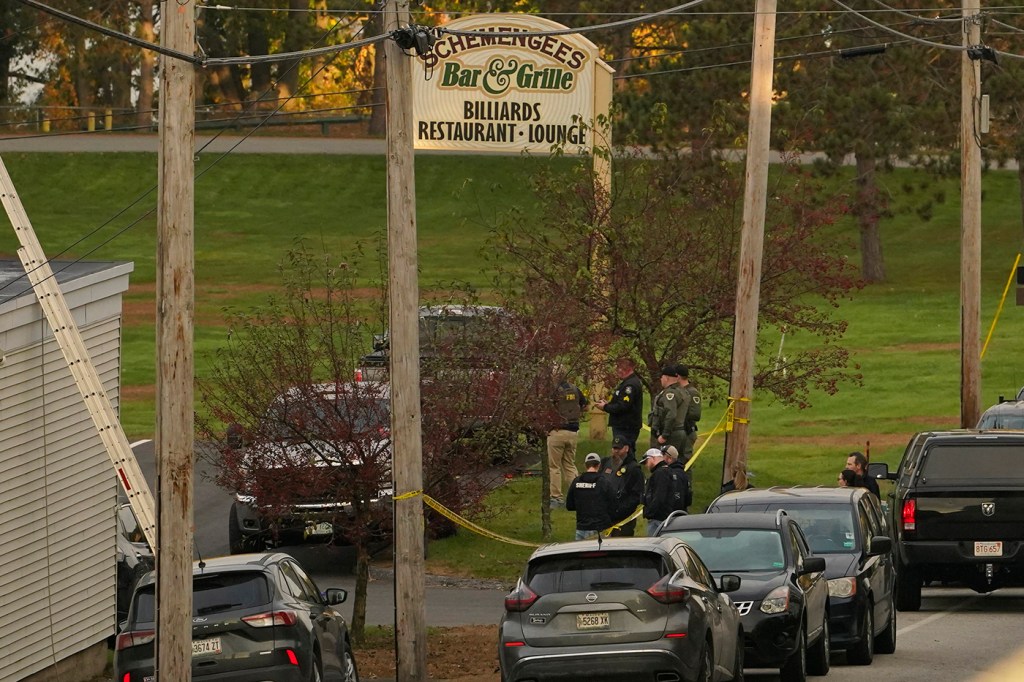Maine shootings are 10th mass killing in a public setting this year, a US record, according to Northeastern expert

The shootings in Maine that have killed at least 18 people are a sign of the lethality of the weapons that are easily available, says James Alan Fox, a Northeastern professor who has been studying mass killings and serial murders for more than 40 years.
The victims were killed in Lewiston, Maine, on Wednesday night at a bowling alley and a bar several miles apart. Images from the bowling alley show a man carrying a high-powered, assault-style rifle. The body of the man accused of the shootings was found Friday evening.
Fox says the Lewiston case is the 10th mass killing in a public setting this year, which he cites as a U.S. record.

There have been 568 mass killings in the U.S. since 2006 that have claimed 2,962 lives, according to the Associated Press/USA TODAY/Northeastern University Mass Killings Database, the longest-running and most extensive data source on the subject, which is maintained by Fox.
A mass killing is defined as an event that results in four or more deaths.
“Let’s understand that these events still are rare in a population of more than 330 million people,” says Fox, the Lipman Family Professor of Criminology, Law, and Public Policy at Northeastern. “What has changed is the severity of these crimes.”
The tragedy in Maine threatens to become the 10th event in U.S. history in which 20 or more people were killed. In addition to the 18 killed in Lewiston, 13 were injured.
“Seven of those mega-killings have occurred in the past decade, dating back to Sandy Hook in December 2012,” Fox says, referring to the murders of 20 first grade students and six educators at Sandy Hook Elementary School by a 20-year-old man with a semi-automatic rifle.
“And that speaks to the lethality of weapons like the AR-15 and the ability to attach large-capacity magazines to it,” Fox says.
In response to the Maine shootings, President Joe Biden again called for a ban on assault rifles and high-capacity magazines.
Fox has long supported legislation that limits the size of the magazine for the AR-15 and other assault-style rifles. The standard capacity magazine for the AR-15 is 30 rounds. Fox says evidence shows that reducing the rounds of ammunition would result in fewer victims.
In a sign of American polarization, Fox notes that some states are limiting access to weapons while others are increasing access.
“On the one hand you have more states that are enacting bans on large-capacity magazines,” says Fox, who notes that high-capacity magazines can also be fitted to handguns. “And then you also have more states that are enacting permitless carry. So these key trends are going in opposite directions.”
The body of 40-year-old Robert R. Card, a Maine resident and U.S. Army reservist, was found in nearby Lisbon Falls, Gov. Janet Mills said at a Friday night news conference, ending a two-day search for the suspect. Officials said he died from a self-inflicted gunshot.
Fox says an unusual aspect of the Maine killings was the escape and elusiveness of the suspected shooter. Perpetrators are usually killed at the scene or take their own life, he says.
Fox believes the suspect followed a detailed plan.
“Mass shooters rarely just suddenly go berserk and shoot without thinking,” Fox says. “Most of them plan for weeks, even months. They plan what they’re going to wear — this guy was reportedly dressed in fatigues. They acquire the weaponry and the ammunition that they need, and they typically plan where they’re going to commit the crime.
“So part of the planning process for this individual involved a getaway plan — driving his car to another town and then abandoning it.”
A car related to the suspect was found at a boat landing several miles from Lewiston, according to the Maine State Police. Maine Department of Public Safety Commissioner Mike Sauschuck said Card was found at 7:45 p.m. near the Androscoggin River and the boat launch.
Why did the shooter choose a bowling alley and bar?
“We don’t know. We may never know,” Fox says. “It may just be a matter of the fact that there were lots of people there. And if you are looking to kill lots of people, you go to places where people congregate.”
Despite gun laws that allow people to carry concealed firearms without a permit, Fox says mass killings are relatively rare in Maine, based in part on its small population. An unrelated mass shooting in Maine took place in April, claiming four lives in the towns of Bowdoin and Yarmouth.
“In New England in general, there are not a lot of homicides,” Fox says. “Even though New Hampshire, Maine and Vermont tend to have liberal gun laws because of the tradition of hunting, those states don’t experience a lot of mass killings.”
Ian Thomsen is a Northeastern Global News features writer. Email him at i.thomsen@northeastern.edu. Follow him on X/Twitter @IanatNU.







